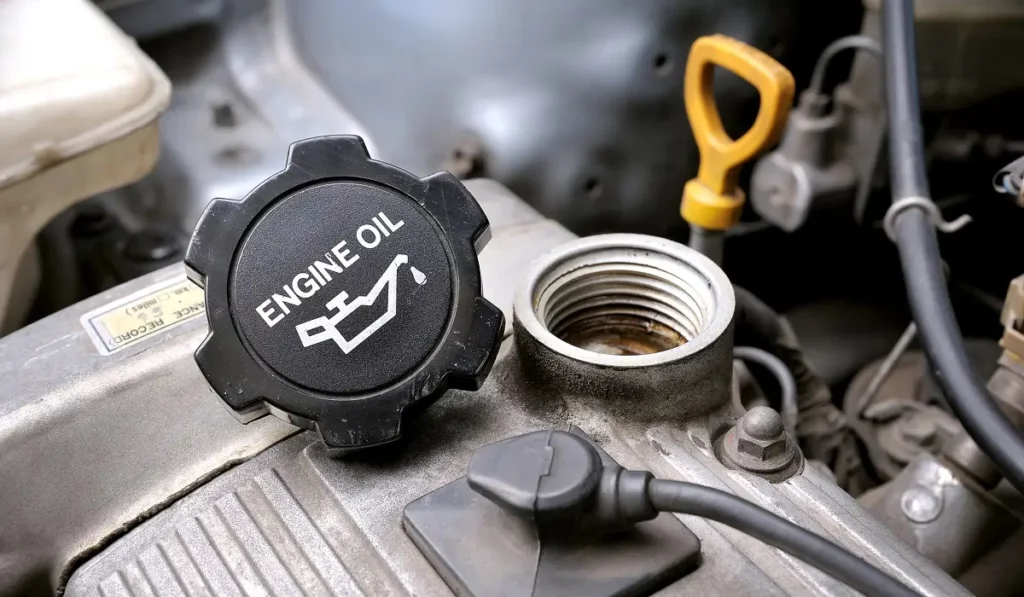In the world of automotive engineering, the smooth operation and longevity of engines are paramount. One critical factor that can significantly impact engine performance and health is “oil shearing.” As automotive enthusiasts and industry professionals, understanding this phenomenon is essential for ensuring optimal engine efficiency, reliability, and longevity.
Oil shearing, in the context of automotive applications, refers to the process of mechanical breakdown and degradation of lubricating oils within the engine. It occurs when the oil experiences intense mechanical forces and high temperatures, leading to a reduction in viscosity and loss of crucial additives. This alteration in oil properties can compromise its ability to protect engine components, potentially resulting in increased wear, reduced fuel efficiency, and decreased engine performance.
This short guide aims to shed light on the significance of oil shearing and how it affects your engine. We will explore the mechanics behind oil shearing in automotive engines, the detrimental effects it can have on engine performance and longevity, and why it is crucial for automotive enthusiasts, mechanics, and manufacturers to address this issue proactively.

Understanding Oil Shearing in Automotive Engines
Oil is the lifeblood of any engine, and its primary function is to provide lubrication to minimize friction between moving components, reducing wear and ensuring smooth operation. However, within the high-stress environment of an automotive engine, oil can undergo significant changes known as oil shearing.
Oil Shearing Process in Engines
Oil shearing occurs due to the mechanical stresses and extreme temperatures present in an engine. As the engine operates, the oil experiences intense pressure between moving parts such as pistons, bearings, and gears. Additionally, the high temperatures within the engine can lead to the thermal breakdown of the oil molecules. These combined factors cause the oil’s molecular structure to break down, leading to a loss of its original viscosity.
How Oil Shearing Occurs in Automotive Lubricants
In automotive engines, oil shearing typically takes place in areas with high shear rates, such as between the piston rings and cylinder walls or in the engine’s gear mesh. These regions experience repeated shearing forces that cause the oil’s viscosity to decrease gradually over time.
Effects of Shearing on Engine Oil Properties
The reduction in viscosity due to oil shearing leads to decreased oil film thickness between moving parts. As a result, the engine may experience higher friction and wear, reducing overall efficiency. Additionally, shearing can also deplete essential additives present in the oil, such as anti-wear agents, detergents, and dispersants, further compromising the oil’s ability to protect the engine.
Common Causes of Oil Shearing in Automotive Engines
Several factors contribute to oil shearing in automotive engines. Engine design, operating conditions, and the choice of lubricants play significant roles. High-performance engines, turbocharged engines, and those with tight tolerances are more susceptible to oil shearing. Additionally, frequent stop-and-go driving, extreme temperatures, and prolonged oil usage can accelerate the degradation process.
What is HTHS (High-Temperature, High-Shear)?
HTHS stands for High-Temperature High-Shear, and it refers to a viscosity measurement of engine oil under specific high-temperature and high-shear conditions. It is an important parameter used to assess an engine oil’s ability to maintain its viscosity and lubricating properties when exposed to the high-stress environment within an engine.
The HTHS viscosity test is typically performed at 150 degrees Celsius (302 degrees Fahrenheit) and under a high-shear rate of 1 million reciprocal seconds (1×10^6 s^(-1)). The test provides valuable information about the oil’s resistance to shearing forces, which are prevalent in the engine, particularly between closely-fitted moving parts like pistons and cylinder walls.
HTHS viscosity is particularly significant for modern engines, which are designed to operate at higher temperatures and under more demanding conditions. Engines with turbochargers, high-performance engines, and those with direct fuel injection require engine oils with appropriate HTHS viscosity to ensure optimal lubrication and protection against wear.
Higher HTHS viscosity values generally indicate better shear stability, which means the oil is more resistant to viscosity loss due to mechanical stresses in the engine. Engine oil manufacturers use HTHS viscosity ratings to classify their oils based on their suitability for different engine types and operating conditions. It is an essential consideration for vehicle manufacturers, mechanics, and automotive enthusiasts when selecting engine oils that meet the specific requirements of their engines and driving conditions.
Motul Lubricants and Oil Shearing
Motul’s engine oils feature a wide range of HTHS values. Our lubricants are formulated to provide the best possible balance between fuel efficiency and engine protection depending on the application. Some oils, such as the Motul 8100 X-Cess 5W-40 feature an HTHS value of 3.7 mPa.s, meaning that this oil is geared towards offering optimal protection.
On the other end of the spectrum, we offer oils such as the Motul 8100 ECO-Clean 0W-20 that features an HTHS value of ≥ 2.6 mPa.s, making it optimized for fuel efficiency while still providing excellent protection to your engine’s internals.
We formulate our lubricants to offer HTHS values depending on the ACEA ratings for each specific application. That way, you are guaranteed to have optimal performance, protection, and lubrication no matter which Motul lubricant you choose for your engine.
Why Oil Shearing Matters for Automotive Performance

Oil shearing is not a trivial concern in automotive applications; rather, it is a critical factor that can significantly impact engine performance, efficiency, and overall reliability. Let’s delve into the reasons why addressing oil shearing is of utmost importance in the automotive industry:
Impact on Engine Efficiency and Performance
As oil shearing leads to a reduction in viscosity, the oil becomes less effective in forming a protective film between moving engine parts. This results in increased metal-to-metal contact and elevated friction, leading to a decrease in engine efficiency. The engine may experience decreased power output, reduced acceleration, and a general decline in overall performance. Over time, this diminished efficiency can lead to increased fuel consumption and higher operating costs.
Effects on Lubricant Viscosity and Thermal Stability
Viscosity is a crucial property of engine oil that determines its ability to flow and lubricate effectively. When oil shearing occurs, the oil’s viscosity drops, and its ability to maintain an optimal oil film thickness diminishes. This, in turn, can lead to increased wear on critical engine components, such as pistons, bearings, and camshafts.
Furthermore, oil shearing also impacts the oil’s thermal stability. The degradation of the oil’s molecular structure can result in the formation of harmful by-products, such as sludge and deposits. These deposits can accumulate in the engine, obstructing oil passages and adversely affecting heat dissipation, which can lead to increased engine temperatures and potential overheating.
Long-Term Consequences for Engine Health and Lifespan
Continuous exposure to oil shearing can have severe long-term consequences for an automotive engine. The increased wear and lack of proper lubrication can accelerate component degradation and reduce the engine’s lifespan. Critical engine parts may wear out prematurely, leading to costly repairs or even engine failure in severe cases. For fleet vehicles and commercial applications, these consequences can have a significant impact on operational costs and downtime.
Real-Life Examples of Oil Shearing Issues in Automotive Applications
Various automotive enthusiasts, mechanics, and industry professionals have reported instances of oil shearing-related problems. These range from decreased fuel economy and increased oil consumption to engine overheating and premature engine wear. Identifying and addressing these issues promptly can save vehicle owners from costly repairs and keep their engines running smoothly for years.
Oil Shearing Testing and Analysis for Automotive Engines
Detecting and understanding the extent of oil shearing in automotive engines is crucial for implementing timely corrective measures. Oil analysis techniques provide valuable data that can help automotive professionals assess the condition of engine oils and identify potential oil shearing issues. Here are some key aspects of oil shearing testing and analysis:
Overview of Oil Analysis Techniques for Cars
Oil analysis involves a comprehensive assessment of the used engine oil to evaluate its physical and chemical properties. Various laboratory tests are conducted to determine viscosity, total base number (TBN), total acid number (TAN), and the presence of contaminants and wear metals. By analyzing these parameters, professionals can gain insights into the oil’s health and any changes caused by oil shearing.
Identifying Shearing Issues through Testing
When performing oil analysis for automotive engines, one crucial parameter to monitor is the oil’s viscosity. A significant drop in viscosity compared to the original specification may indicate potential oil shearing. Additionally, an increase in wear metals, such as iron or copper, could suggest higher levels of metal-to-metal contact due to reduced oil film strength.
Interpreting Test Results and Recommendations for Engine Health
Interpreting the oil analysis results requires expertise and an understanding of the specific engine’s requirements. Professionals analyze the data obtained from oil tests to determine the overall health of the engine and the potential impact of oil shearing. Based on the findings, they can provide recommendations for corrective actions and suggest suitable solutions to address the identified issues.
Incorporating Oil Analysis in Preventive Maintenance for Vehicles
Implementing a regular oil analysis program as part of preventive maintenance is a proactive approach to monitor engine health continually. By establishing a baseline for the oil’s condition and tracking changes over time, automotive professionals can detect early signs of oil shearing or other engine problems. Timely intervention can prevent further damage, improve engine performance, and extend the engine’s lifespan.
Keep Your Engine Healthy with Motul
In the realm of automotive applications, oil shearing stands as a significant challenge that can profoundly impact engine performance, efficiency, and longevity. Understanding the mechanics of oil shearing and its potential consequences is essential for automotive enthusiasts, mechanics, and manufacturers alike.
By selecting Motul automotive lubricants, you are giving your engine the best possible lubrication and a high resistance to oil shearing. Keep your engine healthy with Motul!





